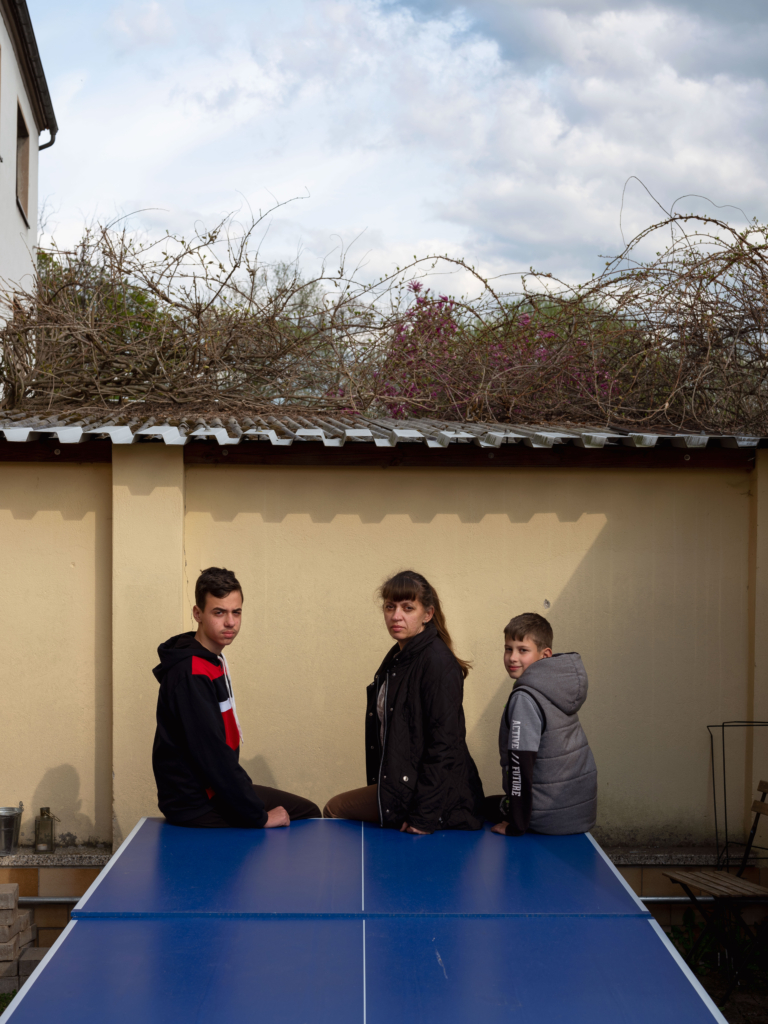Organized by Berlin-based OSTKREUZ Photographers Agency and in collaboration with partners such as Vitsche Culture and Records of War, ‘After the Escape’ is an exhibition and event project dedicated to documenting the experiences of Ukrainians fleeing the war.
Russia’s war in Ukraine is entering its third month in June, and the different social, economic, and political impacts can be observed across Europe and the world. Artists and creative communities are joining forces to document the war and create safer platforms for those impacted to share their stories, traumas, and hopes.
A month-long exhibition and event project, ‘After the Escape’ is centered around documenting the experiences of Ukrainian refugees fleeing the war. In addition to presenting written intimate accounts accompanied by portrait photography, the exhibition seeks to create avenues for dialogue and exchange between residents, journalists and documentors, and the Ukrainian community in Berlin through special events and performances.
The exhibition also features photographs captured by OSTKREUZ photographers Mila Teshaieva and Johanna-Maria Fritz, who have been in Ukraine since the start of the war. Sitting on a train between Kyiv and Odessa, Johanna shared some personal accounts with us about her ongoing work in Ukraine.
‘After the Escape’ runs until June 6, 2022 at the historic Zionskirche in Berlin-Mitte. The final concert is happening on Sunday, May 28, 2022, in cooperation with Mavka & Jazz Aid Ukraine.
-
Johanna, how have you maintained hope and resilience since the start of the war?
I have met so many strong people since the start of the war. I also feel like I am in no position to complain. I am privileged to be able to go home and take breaks when I feel in need.
-
How have you seen people across Ukraine and overseas come together in creative ways to support each other and those in need?
One example is the Kyiv nightlife scene, where young artists have taken to cooking for soldiers, producing molotov cocktails, or organizing events to raise funds and awareness. Ostkreuz has also put together an exhibition and reading group together with Ukrainian artists.
-
Is there anything you’d like to share with readers—stories, resources, other journalists or photographers to stay updated with?
I have some dear colleagues that I have worked closely with during this conflict – among them Mila Teshaieva (Ostkreuz), Emile Ducke (Ostkreuz), Christoph Reuter (DER SPIEGEL) and Thore Schröder (DER SPIEGEL). I do admire the photographic work of Maxim Dondyuk and James Nachtwey, as well as Julia Kochetova and Adrienne Surprenant. I find it important to also note the essential work of fixers and producers, first and foremost Kateryna Malofieieva (Al Jazeera).
-
What was a particular moving portrait to capture for the exhibition ‘After the Escape’?
I shot a picture of an elderly woman in a village north of Kyiv who had lost her son during the war. The image shows her closing the gate of her yard where her son is buried. She is in tears.

After the Escape
The following portraits have been selected from the exhibition to show the diversity in experiences and identities of those impacted by the invasion. The accompanying captions have been abbreviated for length.
Svitlana and her sons Bohdan and Yurii in Vasylkiv, Kyiv Oblast, Ukraine

Olena and her daughter Kira in Bad Vilbel, Germany

Rahim in Parchim, Germany

Sonia and Maksym in Waldsieversdorf, Germany


Galyna in Wiesbaden, Germany

Svitlana in Berlin, Germany

After the Escape / Після порятунку / Nach der Flucht is an exhibition and event project in Berlin organized by OSTKREUZ Photographers Agency and in collaboration with partners such as Vitsche Culture and Records of War. The exhibition features portraits and accounts of Ukrainian refugees who have fled the war, and it includes work from photographers Johanna-Maria Fritz and Mila Teshaieva, who have been in Ukraine since the beginning of the war.
The exhibition runs until June 6, 2022 at the historic Zionskirche in Berlin-Mitte. Upcoming events include a panel discussion on May 25, 2022 and a concert on May 28, 2022. For more information, please visit https://www.ostkreuz.de/neues/.
Please visit this link list for up-to-date information on how to support those impacted by the war in Ukraine.
Text: Anastasiya Varenytsya




